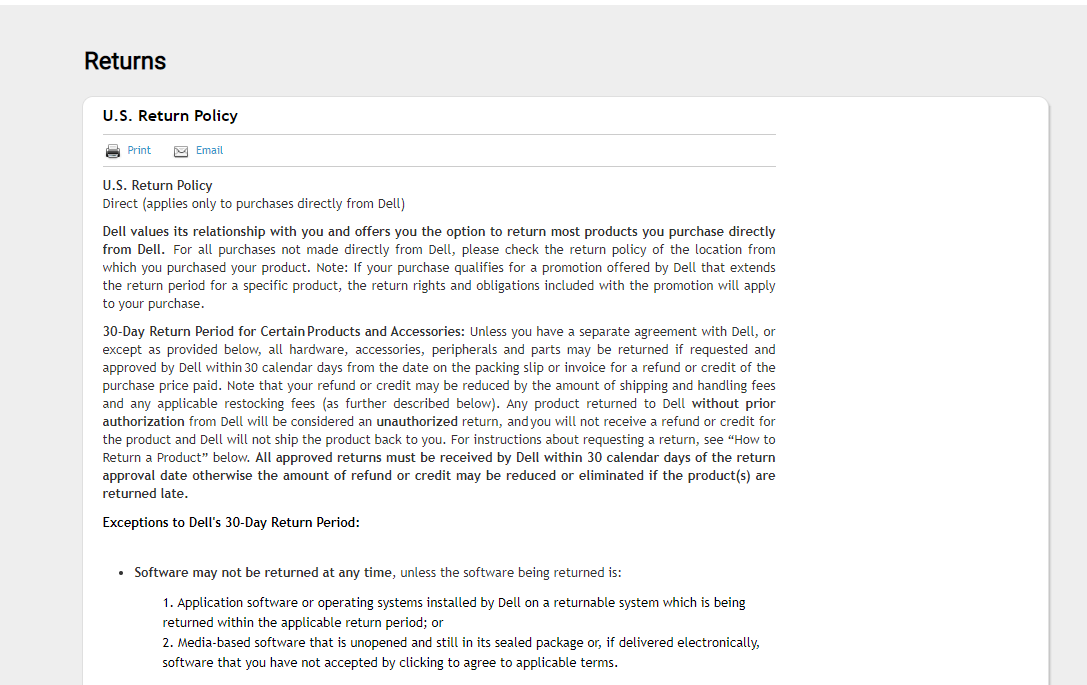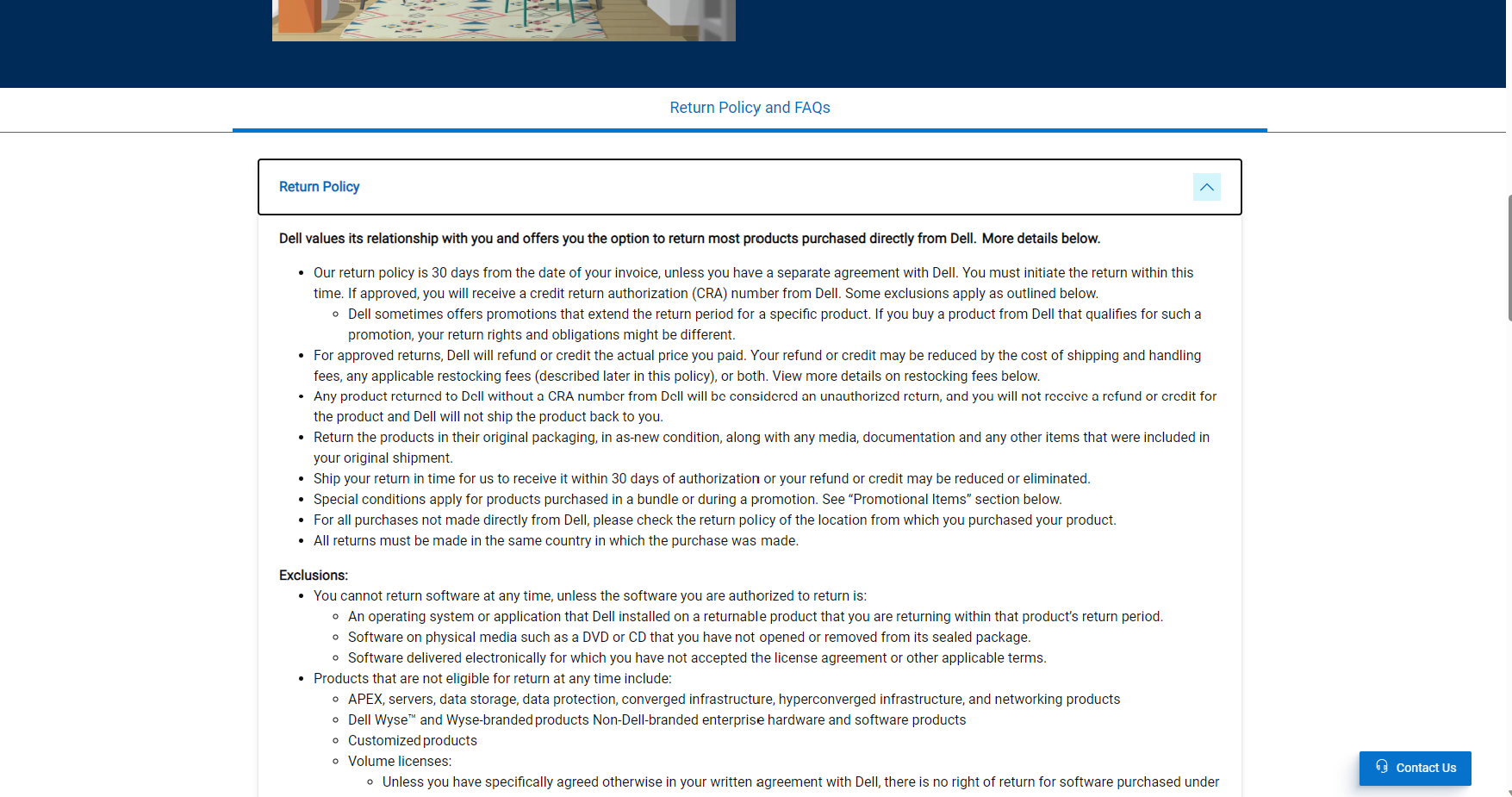RETURN POLICY REFINEMENT
The Problem
The return policy on Dell.com presented several problems. Its outdated look and dense layout posed a significant challenge for users looking to make purchase decisions based on ease of return. In addition, an extended usability study demonstrated that users had a difficult time understanding several details of the 30-day return policy. This was proven to be a noteworthy purchase barrier. I was tasked with refining the return policy with the net-new addition of online self service.
The Process
I began the optimization project by reviewing previous user research. The usability study mentioned above revealed that users had a difficult time understanding several details of the 30-day return policy, namely when the 30-day window begins, and what products are eligible for return and which ones aren’t.
Previous Dell.com Return Policy
Difficult to Discover
The return policy ingress was nested within the legal and privacy link along the bottom of the footer.
The policy page itself was nested within the landing page of this experience, in the bottom section under the subheader “Policies”.
Hidden behind a footer link and an additional landing page link, users experienced significant difficulty locating Dell’s return policy online.
Outdated Legacy Look
The dense presentation of legal verbiage and blocky aesthetic of the policy page discouraged users from learning return details.
CSAT scores were consistently low. Users reported abandonment during the purchase process due to the complexity of the policy, and favored competitors with an easy to find, easy to understand return policy.
Confusing and Unclear Content
In addition to its hidden placement and outdated look, the policy itself wasn’t very clear for users.
Return eligibility, the 30-day return window, and how to obtain the required credit return authorization number were all points of user confusion that were repeatedly surfaced in usability tests.
Our research team reported that these pain points had been a consistent problem for years.
Lengthy and Detailed Stepped Process
The steps outlined in the return policy were perceived by users as extraneous and too detailed. Interestingly enough, several competitors with the identical return policy were reported in previous user research tests as being perceived as far simpler.
I used existing research to guide the updated policy’s look and feel, and carefully reviewed aspects of our competitors’ policies that were reported as favorable.
New Dell.com Return Policy
Updated Policy with Updated Content
Working closely with design on layout options, I focused on clear language with an emphasis on simplicity.
Using approved icons to illustrate each step, I used concise verbiage that I reviewed with our legal council for final approval.
I was able to remove the confusing term “credit authorization code” in favor or more prescriptive and instructional messaging.
Video Overview and Expandable Content
Working with the internal video team, I scripted a brief tutorial outlining and explaining each step of the return process. Business stakeholders were insistent on the verbose CTA button.
The question and FAQ section below addresses the largest issues and pain points as determined by user research, voice of the customer feedback, and customer support call-in questions.
Policy Summary and FAQ Section
I rewrote each expandable section to as easy to be understand as possible. After final approval was provided by legal council, I conducted a round of user testing to validate comprehension.
I specifically focused on the issues exposed during previous usability tests to ensure that the policy’s major pain points were solved.
The placement of the return was moved to its own link directly in the footer, labeled “Returns”.
The Solution
The updated return policy has had a direct impact on CSAT scores as well as voice of the customer feedback. Support center calls were reduced by 17% in the first quarter after implementation, and the self-serve feature has been a frictionless addition to Dell.com. Legal teams from various regions were able to work with our global translation and legal teams to ensure all appropriate exceptions have been properly disclaimed in their respective regions.






